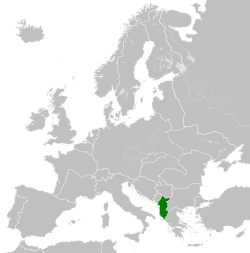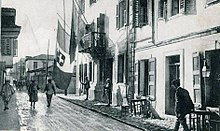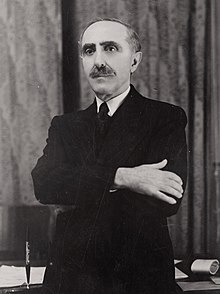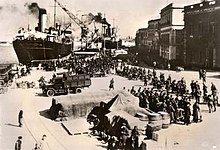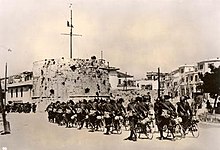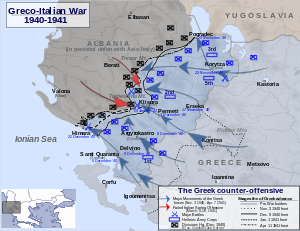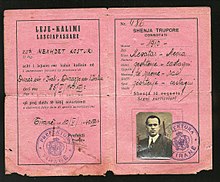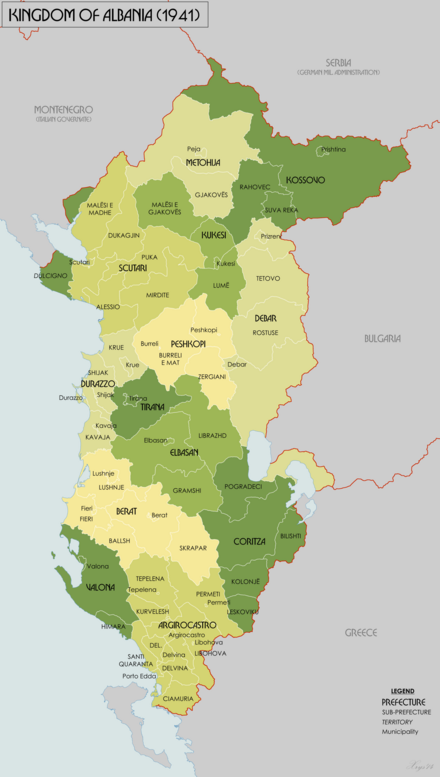The Enchele's polity was the earliest to emerge and centered in Albania. Also the earliest known Illyrian king, Bardylis, emerged in what is now Albania around 400 BC, aiming to make Illyria a regional power interfering with Macedon. He united many southern Illyrian tribes under his realm and defeated the Macedonians and Molossians several times, expanding his dominion over Upper Macedonia and Lynkestis. Before the Rise of Macedon Illyrians were the dominant power in the region. The kingdom of the Taulantii under Glaukias' rule was based in central Albania and dominated southern Illyrian affairs in the late 4th century BC, exerting great influence on the Epirote state through the close ties with the Molossian king Pyrrhus. Under the Ardiaei the greatest known Illyrian kingdom emerged in the 3rd century BC encompassing also northern Albania in its core territory. It became a formidable power both on land and sea by assembling a great army and fleet, and directly ruling over a large area made up of different Illyrian tribes and cities that stretched from the Neretva River in the north to the borders of Epirus in the south, while its influence extended throughout Epirus and down into Acarnania. The dominant power of the Illyrian kingdom in the region ceased after the Illyrian defeat in the Illyro-Roman Wars. The last known "King of the Illyrians" was Gentius, of the Labeatae tribe.

In Albania, World War II began with its invasion by Italy in April 1939. Fascist Italy set up Albania as its protectorate or puppet state. The resistance was largely carried out by Communist groups against the Italian and then German occupation in Albania. At first independent, the Communist groups united in the beginning of 1942, which ultimately led to the successful liberation of the country in 1944.

Greater Albania is an irredentist and nationalist concept that seeks to annex the lands that many Albanians consider to form their national homeland. It is based on claims on the present-day or historical presence of Albanian populations in those areas. In addition to the existing Albania, the term incorporates claims to regions in the neighbouring states, the areas include Kosovo, the Preševo Valley of Serbia, territories in southern Montenegro, northwestern Greece, and a western part of North Macedonia.

The Balkans campaign of World War II began with the Italian invasion of Greece on 28 October 1940. In the early months of 1941, Italy's offensive had stalled and a Greek counter-offensive pushed into Albania. Germany sought to aid Italy by deploying troops to Romania and Bulgaria and attacking Greece from the east. Meanwhile, the British landed troops and aircraft to shore up Greek defences. A coup d'état in Yugoslavia on 27 March caused Adolf Hitler to order the conquest of that country.

The Albanian Fascist Party was a fascist organisation active during World War II which held nominal power in Albania from 1939, when the country was invaded by Italy, until 1943, when Italy capitulated to the Allies. Afterwards, Albania fell under German occupation, and the PFSh was replaced by the Balli Kombëtar.
The Balli Kombëtar was an Albanian nationalist, collaborationist, and anti-communist resistance movement during the Second World War. It was led by Ali Këlcyra and by Midhat Frashëri. The movement was formed by members from the landowning elite, liberal nationalists opposed to communism, and other sectors of society in Albania.

Tepelenë is a city and a municipality in Gjirokastër County, in the south of Albania. The town is on the left bank of the Vjosa River, about three kilometres downstream from its union with the Drino.

The Principality of Albania was a monarchy from 1914 to 1925. It was headed by Wilhelm, Prince of Albania, and located in modern Albania in the Balkan region of Europe. The Ottoman Empire owned the land until the First Balkan War (1912—1913), which ended in the Treaty of London that formed the principality. The Principality of Albania survived invasions during World War I (1914—1918) and subsequent disputes over Albanian independence during the Paris Peace Conference (1919—1920). In 1925, the monarchy was abolished and the Albanian Republic (1925—1928), a parliamentary republic and dictatorship, was declared.

The German occupation of Albania occurred between 1943 and 1944 during World War II. Before the armistice between Italy and the Allied armed forces on 8 September 1943, Albania had been in a de jure personal union with and was de facto under the control of the Kingdom of Italy. After the armistice and the Italian exit from the Axis, German military forces entered Albania and it came under German occupation, creating the client-state, the Albanian Kingdom.

The Italian invasion of Albania was a brief military campaign which was launched by Italy against Albania in 1939. The conflict was a result of the imperialistic policies of the Italian prime minister and dictator Benito Mussolini. Albania was rapidly occupied, its ruler King Zog I went into exile in the neighboring Kingdom of Greece, and the country was made a part of the Italian Empire as a protectorate in personal union with the Italian Crown.
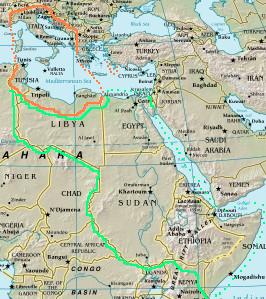
Imperialism, colonialism and irredentism played an important role in the foreign policy of Fascist Italy. Among the regime's goals were the acquisition of territory considered historically Italian in France and Yugoslavia, the expansion of Italy's sphere of influence into the Balkans and the acquisition of more colonies in Africa. The pacification of Libya (1923–32), the invasion of Ethiopia (1935–36), the invasion of Albania (1939), the invasion of France (1940), the invasion of Greece (1940–41) and the invasion of Yugoslavia (1941) were all undertaken in part to add to Italy's national space. According to historian Patrick Bernhard, Fascist Italian imperialism under Benito Mussolini, particularly in Africa, served as a model for the much more famous expansionism of Nazi Germany in Eastern Europe.

The Italian colonial empire, also known as the Italian Empire between 1936 and 1941, was founded in Africa in the 19th century. It comprised the colonies, protectorates, concessions and dependencies of the Kingdom of Italy. In Africa, the colonial empire included the territories of present-day Libya, Eritrea, Somalia and Ethiopia ; outside Africa, Italy possessed the Dodecanese Islands, Albania and also had some concessions in China.
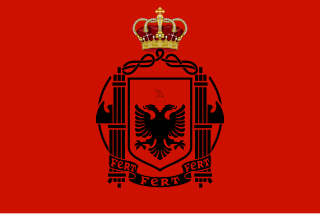
The Italian colonists in Albania were Italians who, between the two World Wars, moved to Albania to colonize the Balkan country for the Kingdom of Italy.
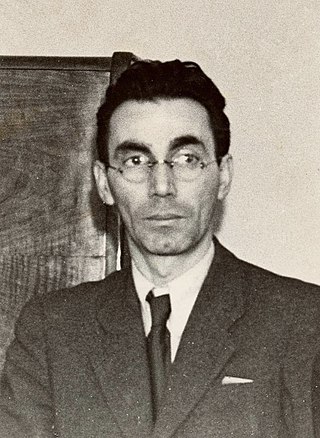
Xhafer Deva was a fascist Kosovo Albanian politician during World War II. A notable local politician in Kosovo and in Axis-occupied Albania, he took charge of German-occupied Mitrovica and worked with the Germans to establish a pro-German Albanian government in Kosovo. Following the capitulation of Italy from the war, he helped form a provisional government under German occupation and set up the Second League of Prizren alongside other Albanian nationalists.

Abaz Kupi was an Albanian military officer.
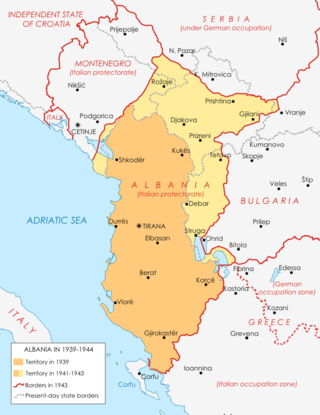
The Holocaust in Albania consisted of crimes committed against Jews in Albania while Albania was under Italian and German occupation during World War II. Throughout the war, nearly 2,000 Jews sought refuge in Albania-proper. Most of these Jewish refugees were treated well by the local population, despite the fact that Albania-proper was occupied first by Fascist Italy, and then by Nazi Germany. Albanians often sheltered Jewish refugees in mountain villages and transported them to Adriatic ports from where they fled to Italy. Other Jews joined resistance movements throughout the country.
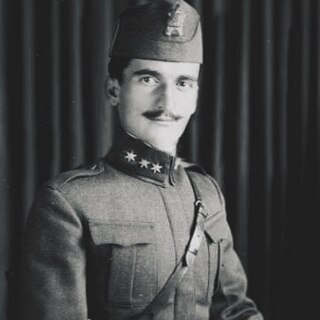
Prenk Pervizi was an Albanian military figure, General of the Albanian army, who also served as Minister of Defence for a short period during World War II. Pervizi attended the Military Academy in Vienna, Austria, from 1914 to 1918, and later in Torino, 1930–1933. As a military figure, he was a protagonist in the foreground of Albanian history in the years between 1918 and 1944. Friend and right-hand man of King Zog, he remained loyal from the beginning to the end to him and the Albanian Kingdom, 1928–1939. During World War II he was involved in military operations. Recruited by the Italians and sent to the first line of combat, he came into conflict with them, withdrawing the Albanian troops from the Greco-Italian War. He also opposed the German SS troops recruitment process in Albania. Bitter opponent of the communists, after failed attempts to engage some serious support from the British emissaries, he was forced to exile, first in Greece and later in Belgium as a political refugee. He spent the rest of his life in Belgium, where he died at age 80, on 6 September 1977.
The Treaties of Tirana were signed in Tirana between Albania and Italy in the 1920s, bringing Albania into the Italian sphere of influence and gradually turning the Albanian state into a de facto protectorate of Italy.

Kosovo during the Second World War was in a very dramatic period, because different currents clashed, bringing constant tensions within it. During World War II, the region of Kosovo was split into three occupational zones: Italian, German, and Bulgarian. Partisans from Albania and Yugoslavia led the fight for Kosovo's independence from the invader and his allies. During occupation by Axis powers, Bulgarian and Albanian collaborators killed thousands of Kosovo Serbs and Montenegrins. Tens of thousands were also expelled or were placed into concentration camps.

The Italian invasion of Kosovo, also called Operation "Marita", was an invasion that took part during the Invasion of Yugoslavia in World War II, when Italian soldiers marched through Kosovo and occupied the region. After the invasion, a conference was held in Vienna which decided that the majority of Kosovo would have been given to Italian-controlled Albania, including Pristina after the Germans withdrew from taking the city.
